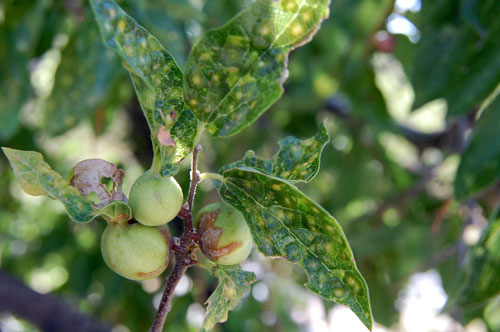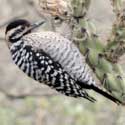Hackberry Petiole Gall Psyllid
Pachypsylla venusta

This Netleaf Hackberry (Celtis laevigata reticulata) was supporting a very large population of psyllids. It was found in Rackensack Canyon, Maricopa Co., Arizona, USA.
Psyllidae -- Jumping Plant Louse Family
Net-leaf Hackberry trees almost always harbor a population of Pachypsylla, aphid-like bugs sometimes called jumping plant-lice, that reside within swollen galls in the leaf petioles. These enlarged structures might appear at first to be a fruit of some kind. The bugs produce an irritating substance similar to a plant hormone that causes the petiole to swell providing both room and board for the uninvited guests. The structures become very hard and durable and remain on the tree through the winter providing the psyllids a very secure home. Still other closely related psyllid bug cause blister-like galls on the leaves.
Netleaf Hackberry trees are deciduous, dropping their leaves with the onset of winter. But the leaves with swollen galls on the petioles do not fall off, instead remaining attached to the tree through the following spring and beyond. The bugs are inside resing in their last stage of nymphal development ("last instar"). As the tree is putting on new leaves in spring the bugs molt to adult and escape the gall. Hence mating and the deposition of new eggs into leaf tissue begins. Ladder-backed Woodpeckers find that during the winter months these galls can be broken open to reach an insect meal. The broken open galls can be found wedged into tree bark crevices nearby.
